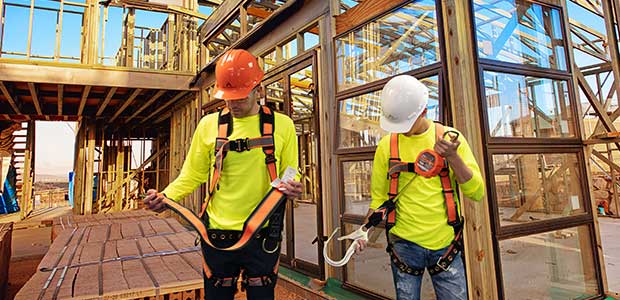
Providing Training for Fall Protection
How to train and equip employees for fall protection to satisfy OSHA regulations and ensure worker safety.
- By David Ivey
- Dec 01, 2020
Not surprisingly, fall protection remains the number one most frequently cited violation on OSHA’s Top 10 Most Frequently Cited Standards for fiscal year 2019 (Oct. 1, 2018, to Sept. 30, 2019). Failure to provide adequate fall protection training also appears on OSHA’s list, ranking at number eight.
Although these may seem like separate issues—one of hardware and the other of training—they both hint at a common underlying problem: workers are not being adequately prepared for working conditions that involve fall risks and working at heights. This conclusion rings true because fall hazards remain widely recognized as one of the biggest safety concerns in construction.
But perhaps having a common underlying problem also means that both of these issues may have a common solution. By adequately preparing workers for situations in which they may face fall risks—both by providing them with sufficient training and proper personal fall protection equipment—we can significantly reduce the frequency of both of these OSHA violations and many of the most dangerous workplace situations.
Fall Protection Training and Inspections
OSHA offers a free lesson plan and training guide that can be used as a basic fall prevention training crash-course. Fall prevention training should cover the hazards related to ladders, scaffolding and roofing work. The most effective training involves short, interactive and easy-to-understand lessons.
You don’t have to go it alone. You can find numerous free fall protection safety training courses online. You can also find Competent Person and Qualified Person courses and certifications. These courses are ready-made and often freely available, so you don’t have to design training programs from scratch. Many allow you to sign up for instructor-led courses, too.
You can also opt for an on-site safety inspection and hazard assessment from any of a number of safety equipment suppliers. Companies that specialize in installing and engineering fall protection solutions will often visit your facility or jobsite to conduct a site walkthrough or even a comprehensive fall protection/prevention analysis to help you spot any dangers and address them. You can address as many of the hazards as you can with engineered solutions and focus your team’s training on identifying and avoiding the kinds of hazards that come up during the assessment, since it stands to reason that these are the types of hazards your workers are most likely to encounter in the future in your line of work.
Equipping Employees with Personal Fall Protection Gear
In addition to training your workers to identify and avoid fall risks, you’ll need to outfit them with PPE whenever they are working at heights. Common examples of personal fall protection gear include full body harnesses, lanyards, self-retracting lifelines (SRLs) and other forms of PPE.
Ideally, you should provide each employee with their own safety equipment to ensure there is always enough equipment for every worker, and that each employee has gear they know how to use and that fits them properly.
You should also teach your workers about the personal fall protection equipment available to them—including how to use it and when they need to wear it—as part of your training program. It is important for all workers to understand when and how to use personal fall protection equipment in order to ensure that they use it correctly every time.
Once again, you don’t need to reinvent the wheel. Many suppliers of personal fall protection equipment offer specialized training designed to educate workers on how to correctly use the types of gear they provide. It is worth inquiring about these training opportunities when you purchase fall protection equipment—your supplier may have materials readily available and can tell you about any customized programs they can offer.
The name of the game is preparing workers for the fall hazards they face when working at heights. We can achieve this by protecting them with proper engineered fall prevention solutions, equipping them with suitable personal fall protection gear and preparing them with sufficient training. By addressing this central issue of preparation, we can reduce the number of fall-based injuries and deaths and make significant progress toward clearing fall protection and training from OSHA’s list of most common citations.
This article originally appeared in the November/December 2020 issue of Occupational Health & Safety.